Inventory management software is a business tool for tracking stock levels, sending alerts for changes in inventory levels, generating reports, tracking returns, building and barcode scanning, and much more.
Inventory management system enhances operational efficiency by optimizing order fulfillment, ensuring optimal inventory levels, and improving customer satisfaction through timely deliveries.
Geekflare has reviewed and listed the best inventory management software based on business size, features, pricing, and learning curve. There are software solutions for small, medium, and enterprise-level companies.
- 1. Zoho Inventory – Best Overall
- 2. BoxHero – Best to Streamline Order Management
- 3. Bitrix24 – Best for Managing Multiple Warehouses
- 4. Intuit QuickBooks – Best for Small Businesses
- 5. NetSuite – Best for Enterprise-Level Businesses
- 6. monday.com – Best for Project Management
- 7. Sortly – Best for Simple Inventory Management
- 8. inFlow – Best for Inventory Tracking
- 9. Fishbowl Inventory – Best for Manufacturing
- 10. Finale Inventory – Best for Multi-Channel Retailers
- 11. Veeqo – Best for e-Commerce
- 12. Ordoro – Best for Order Management
- 13. Brightpearl – Best for Retail and Wholesale
- 14. Cin7 Core – Best for Inventory Optimization
- 15. Katana – Best for Manufacturing and Scaling
- 16. Megaventory – Best for SMEs
- 17. Unleashed – Best for Stock Control
- Show less
You can trust Geekflare
Imagine the satisfaction of finding just what you needed. We understand that feeling, too, so we go to great lengths to evaluate freemium, subscribe to the premium plan if required, have a cup of coffee, and test the products to provide unbiased reviews! While we may earn affiliate commissions, our primary focus remains steadfast: delivering unbiased editorial insights, and in-depth reviews. See how we test.
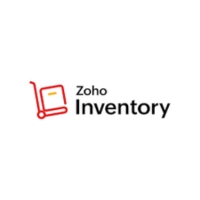
1. Zoho Inventory
Best Overall
- Barcode ScanningYes
- Inventory Turnover ReportingNo
- IntegrationShopify, Amazon, Etsy, eBay
About Zoho Inventory
Zoho Inventory is the best overall software solution for inventory management. Zoho Inventory provides 3 main features — billing, purchase orders, and invoicing. Zoho has been developing business tools since 2004, after they were established under their old name AdventNet in 1996.
Their business suite of related software includes Zoho Books, Zoho CRM, Zoho Voice, and Zoho Forms. If you’re looking to upgrade your tech stack, you can benefit from integrations with their other tools, many of which also have free plans. Teams of all sizes can benefit from considering Zoho Inventory’s range of offerings.
Zoho Inventory Features
Invoicing, multilingual invoices, multi-currency transactions, multi-currency vendors, backorders, purchase order management, and billing.
Organization with item groups, categories, price lists, serial number tracking, batch number tracking, barcode generation, and shipping labels.
e-commerce integrations for shipping, shopping carts, and Shopify.
Customizable automation and reporting for tasks and inventory data.
Zoho Inventory Pros/Cons
Offers analytics and automation that can benefit larger businesses with complex inventory data.
Multi-currency optics and e-commerce integration to benefit global and online teams.
Enough plans to offer scalability as your company grows.
Offers a free plan for small teams or individual sellers.
Pricey for small teams that need stronger features but don’t have established budgets yet.
Important inventory tools like serial number tracking and price lists are limited to higher tiers.
Steep learning curve.

2. BoxHero
Best to Streamline Order Management
- Barcode ScanningYes
- Inventory Turnover ReportingYes
- IntegrationSlack, Zapier, API
About BoxHero
BoxHero is an inventory management software that provides functionalities such as supplier management, inventory tracking, inventory analytics, cost tracking, barcoding, and location management for warehouses.
More than 10,000 businesses around the world use BoxHero to keep track of their inventory information in real-time and enhance the visibility of sales to shipment flow. Many also take advantage of BoxHero’s analytics feature to spot slow-moving items or get a rough estimate of your gross profits on items sold, without entering a thing in their accounting software.
BoxHero offers direct integrations to Slack and others via its open API. The platform is flexible enough to handle your inventory management needs while also working in conjunction with your other software stack.
You can simply sign up and get a 30-day free trial without credit card information and start managing your inventory right away by registering your items or importing an Excel spreadsheet.
BoxHero Features
Streamlines buying and selling processes around inventory management
Real-time updates on orders
Label printing functionality
Directly generate purchase orders (PO), sales orders (SO) and invoices
Supports both desktop and mobile environments
BoxHero Pros/Cons
Effortless to implement even for non-techies.
Multi-platform support
Integrations with multiple software via Zapier
Lack of additional tiers to suit various categories of users.
The paid plan offers only 3 locations, which can be a limiting factor for large companies with more than 3 warehouses.
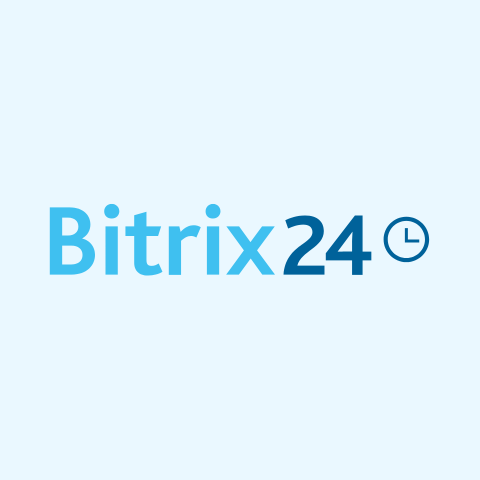
3. Bitrix24
Best for Managing Multiple Warehouses
- Barcode ScanningYes
- Inventory Turnover ReportingNo
- IntegrationMiro, Stripe, WhatsApp Business
Why we chose Bitrix24
Bitrix24 software is a powerful inventory management vendor. More than 15 million users trust this service, and it has a lot of positive reviews. Bitrix24 can perform statistical analysis on components, raw materials for goods, and its own production at a first-class level. This service can be used by placing it on the cloud or your own server, if necessary.
Inventory Management is a Bitrix24 tool, with the help of which you can manage products in stocks, record receipts, sales orders, transfers, and write-offs. All receipts, write-offs, and transfers will be documented and displayed in the system. Employees will enter data online, and you will be able to control your business.
Bitrix24 features comprehensive inventory management capabilities. It manages stock, controls warehouses, monitors sales, and tracks deliveries – all inside a single ecosystem.
– Full traceability: from the supplier to the customer
– Manage multiple warehouses via a single dashboard
– Real-time order and inventory updates
– Integrated with Bitrix24 CRM and product catalog
Inventory Management is also available in the Bitrix24 mobile app. It lets you manage all the documents on the go; create and process stock receipts, stock adjustments, transfers, and write-offs.
Bitrix24 Features
Multilingual invoices
Multi-currency transactions and vendors
Backorders
Purchase order management and billing
Barcode generation, and shipping labels
E-commerce integrations for shipping
Bitrix24 Pros/Cons
Gantt Charts
Scrum Projects
Ready to use tasks templates
Tasks automation
Integration with Miro
Cloud-based or On-premise Storage
Powerful tools covering multiple aspects of business management.
Too many features can be overwhelming for beginners.
Steep learning curve
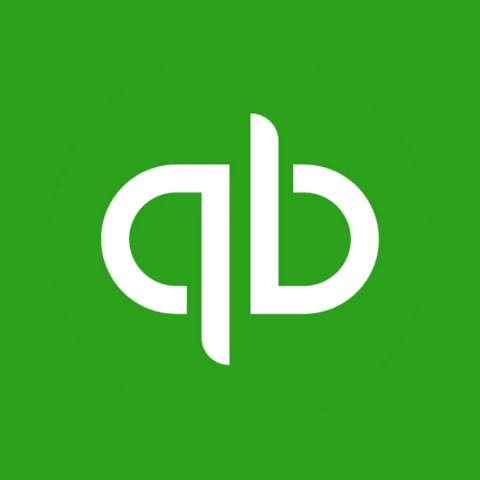
4. Intuit QuickBooks
Best for Small Businesses
- Barcode ScanningNo
- Inventory Turnover ReportingNo
- IntegrationShopify, WooCommerce, BigCommerce
About Intuit QuickBooks
Quickbooks is a software solution that includes an inventory management feature as part of its accounting suite. Quickbooks allows you to manage retail, construction, and manufacturing inventory, product sales, and purchase orders. It also includes a payroll integration to help with managing employees as well.
Intuit began in 1983 in California and now offers several major business products, including TurboTax, CreditKarma, and Mailchimp. For 2023, they made 14.4 billion from their business offerings.
Intuit QuickBooks Features
Organizing product portfolio with prices, images, categories, etc.
Automatic calculation of the cost of products sold
Report generation of best-selling products, taxes paid, total sales, etc.
Tracking inventory items, non-inventory items like spare parts, services, and bundled inventory
Intuit QuickBooks Pros/Cons
Monthly pricing with no annual contract and the ability to cancel anytime.
Some of their plans are affordable for established teams and less expensive than many competitors.
Great for complex inventory and accounting needs.
User seats are built into the monthly cost for more savings.
It’s not a good choice for startup sellers.
Strong learning curve.
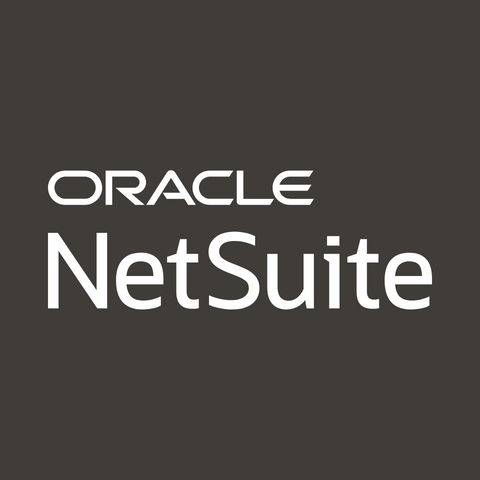
5. NetSuite
Best for Enterprise-Level Businesses
- Barcode ScanningYes
- Inventory Turnover ReportingYes
- IntegrationShopify, Magento, BigCommerce
About NetSuite
NetSuite by Oracle is one of the most powerful business solutions for major enterprises that includes an inventory management feature. For inventory management, NetSuite provides in-depth insights from stores, warehouses, and shippers and automates business processes to ensure nothing slips between the cracks.
Oracle’s NetSuite is an ERP available in 219 countries with over 37,000 customers. They are a great choice for large teams that need to manage financial data, complex inventory, HR, and business process automation, all in a cloud-based subscription.
NetSuite does not provide upfront pricing. They offer annual licenses, with costs based on users, features, and applicable modules needed, along with a setup fee. With the ability to pay for what you need, there is the possibility to save. It’s also good to note that inventory management is part of the license and not an add-on feature.
NetSuite Features
Multi-location fulfillment to manage stock.
Cycle counting for inventory items.
Inventory replenishment and reorder.
Traceability with lot and serial tracing for inventory items.
Reporting dashboard with KPIs, stock, locations, and predictive stock analytics.
NetSuite Pros/Cons
Great features for in-depth insights into your data and fail-safes to anticipate problems.
Ideal for large teams with complex inventory systems in multiple locations managed by multiple people.
No upfront pricing, which means more effort to find pricing compared to competitors.
Not a great choice for simple needs like businesses that are just starting out.

6. monday.com
Best for Project Management
- Barcode ScanningNo
- Inventory Turnover ReportingNo
- IntegrationZapier, Integromat
About monday.com
monday.com is a popular and robust project management tool that is best for teams where managing inventory and project resources is intertwined. Since 2012, monday.com has worked to offer business software solutions, currently providing monday.com work management, monday.com Sales CRM, and monday.com Dev.
monday.com Work Management is their project development tool to handle business operations and workflows. With their resource management tools, you can stay on top of workloads, approval processes, client projects, tasks with set dependencies, scheduling, and more. monday.com provides standard templates for product management, operations, sales, manufacturing, and construction to help you get started.
While this isn’t the best choice for complex inventory management, it is great for simple needs, especially with monitoring the projects, scheduling, and people involved in your business operations. monday.com provides customizable templates for inventory management within your project.
monday.com Features
Intuitive log board to manage the complexity of inventory levels
Inventory reports and chart views to visualize stock levels
Instant notifications about stock status, reorder points, and low product levels.
Keep track of incoming and outgoing orders, delivery dates, and fulfillment progress.
Maintains a historical record of orders
monday.com Pros/Cons
Has a strong enterprise plan for big teams with high-volume data including 1000GB file storage and advanced security with HIPAA compliance.
All paid tiers come with 24/7 customer support, which is not the case with many competitors’ plans.
Free plan for small teams or potential buyers that want to explore before any commitment.
Integrations, automation, and most work views are reserved for higher tiers.
Not the right choice for extensive inventory needs like multi-location monitoring, order fulfillment process, or shipping management.

7. Sortly
Best for Simple Inventory Management
- Barcode ScanningYes
- Inventory Turnover ReportingNo
- IntegrationQuickBooks Online, Slack, Webhooks
About Sortly
Sortly is an easy software solution designed for teams seeking a straightforward approach to meet basic inventory needs. The company operates out of 3 different countries and 17 US states. Over 20,000 companies trust Sortly with their inventories.
Sortly offers great tools for inventory tracking and notifications to ensure priorities and deadlines aren’t overlooked. While not the cheapest software, they are on the low side for inventory management systems, which can often be several hundred a month.
Sortly Features
Inventory lists with customer fields, tags, and folders.
User controls and role permissions.
Label generation for QR codes and barcodes.
Low stock alerts for email and mobile apps.
Activity history and summary reports.
Helpful integrations like QuickBooks Online, Slack, and Webhooks.
Email support for all paid plans.
Sortly Pros/Cons
Straight-forward and affordable solution for simple organization and customization.
Tiers have included set amounts of user seats rather than more costly per-user pricing.
Good for teams struggling to track changes in inventory by offering diverse reporting options and stock alerts.
Free plan is only good for exploring the software and not for sellers with growing companies.
Integrations limited to Ultra and Enterprise making it harder to work with your tech stack.

8. inFlow
Best for Inventory Tracking
- Barcode ScanningYes
- Inventory Turnover ReportingYes
- IntegrationQuickBooks, Shopify, Amazon
About inFlow
inFlow is perfect if you have a large inventory spread across multiple locations and need detailed tracking and monitoring of products across all channels. Since 2007 from Canada, inFlow has been an SMB-friendly organization with over 40,000 global sellers trusting them.
They have tools for managing inventory as well as sales and purchase orders. In terms of affordability, they can be on the high side. inFlow can be worth the cost for teams managing complex inventories for a wide variety of use cases from online retail sellers or state-of-the-art technology.
inFlow Features
Inventory and order management.
Sales, invoicing, and purchasing.
Organization with photos, SKUs, barcode generation, serial numbers, categories, measurements, and dimension descriptions.
Detailed stock tracking.
Multiple reorder options.
Integrates with Xero and QuickBooks.
inFlow Pros/Cons
Suited for warehouse, manufacturing, equipment tracking, and teams with multiple locations.
Best for organizations with a high volume of products, locations, purchasing, and sales to monitor.
Full customer support in all plan tiers with access to your own customer success manager.
The same core features are in all plan tiers.
Built-in team seats for cost savings, especially for teams that need multiple users with access to their inventory.
This is on the high end price-wise compared to competitors.

9. Fishbowl Inventory
Best for Manufacturing
- Barcode ScanningYes
- Inventory Turnover ReportingYes
- IntegrationQuickBooks, Shopify, Magento
About Fishbowl Inventory
Fishbowl is a strong solution with the functionality to handle inventories in multiple locations while offering automation and real-time insights. Founded in 2001 and headquartered in Utah, Fishbowl helps thousands of teams with inventory tracking.
Fishbowl is a dedicated manufacturing inventory tool for QuickBooks users and syncs together to offer highlights on financial data related to your inventory and purchasing. The core capabilities of the software are centered on streamlining inventory operations, pulling important data, and improving decision-making to avoid costly inventory mistakes.
Fishbowl Inventory Features
Inventory management for multiple locations and real-time stock tracking.
Automated counting for stock.
Detailed parts and business asset tracking within the inventory.
Barcode generation and scanning in the mobile app.
Transparency and traceability for strong reporting.
Quality assurance and powerful data security.
Fishbowl Inventory Pros/Cons
All plans come with full phone, chat, and email support.
Flexible deployment with cloud-based and on-premise versions.
Specifically designed for big teams with warehousing and manufacturing workloads to manage.
On the costly side of this list, with costly add-ons and not the same appealing discounts as other competitors.
Only 2 users are included in the pricing for all plan options, which is less than the built-in seat pricing of many competitors.

10. Finale Inventory
Best for Multi-Channel Retailers
- Barcode ScanningYes
- Inventory Turnover ReportingNo
- IntegrationE-commerce, Accounting, Shipping, POS Systems
About Finale Inventory
Finale Inventory lets sellers track inventory across multiple locations, especially for online stores. Since 2010 in California, Finale has been dedicated to offering priority inventory management software to help business owners avoid expensive mistakes. They are trusted by Fortune 500 companies as well as many SMB online sellers.
Finale was developed with complex manufacturing and warehouse management in mind. Finale Inventory offers automation, financial reporting, and order procurement. Sellers looking for retail inventory software with scalability and e-commerce tools may consider Finale Inventory.
Finale Inventory Features
Inventory management for multiple warehouses and e-commerce.
Manufacturing management tools like lot tracking, units of measurement, and label printing.
Procurement and stock replenishment for reordering, forecasting, and transfers.
40 e-commerce integrations with QuickBooks Online.
Client portal.
Custom reports, documents, and fields.
Finale Inventory Pros/Cons
Great for established teams, especially medium and large organizations.
Built-in user seats in the pricing.
Best for online sellers that need manufacturing and e-commerce inventory tools.
Most of the mid and higher tiers are too costly for small teams.
Support is limited across plan tiers with different email response times, access to training, and phone/zoom access.

11. Veeqo
Best for e-Commerce
- Barcode ScanningYes
- Inventory Turnover ReportingYes
- IntegrationShopify, BigCommerce, Magento, eBay
About Veeqo
Veeqo is a free inventory management system great for individual sellers, small teams, and fresh startups. Veeqo was acquired by Amazon in 2021 and is a popular choice for Amazon retailers, offering advanced security, discounted shipping rates, and core inventory features to manage multiple locations.
Veeqo software and shipping tools are free to use. They offer high-end tools to match teams of all sizes with inventory, shipping, and warehouse management. There are few competitors as affordable as Veeqo and even fewer solutions that offer shipping management. Veeqo is worth exploring for the potential cost savings and streamlined operations.
Veeqo Features
Automated inventory management for Amazon, Shopify, and eBay.
Works with major US shippers like FedEx, USPS, UPS, and DHL.
Simultaneous updates on stock and prices to all integrated stores.
Ability to manage inventory in multiple locations, stock transfer, sales, purchase orders, and counting.
Integrated with over 50 e-commerce platforms and shipping carriers like WooCommerce, Bigcommerce, Magneto, Torque, 3PL Worldwide, Floship, and many more.
Veeqo Pros/Cons
Great e-commerce inventory management tool for Amazon sellers.
Great choice for online sellers that need both an inventory and shipping tool.
Perfect for most online businesses, especially ones that have small budgets or enterprise-size teams that want to save on software costs.
Affordable with unlimited users and access to all features for everyone.
Not ideal for teams outside of e-commerce.

12. Ordoro
Best for Order Management
- Barcode ScanningYes
- Inventory Turnover ReportingNo
- IntegrationQuickBooks Online, Shopify, Magento
About Ordoro
Ordoro is a strong solution for the order fulfillment process. Ordoro started in 2010 in Austin, Texas, and is committed to helping online SMBs grow. They were used to ship over 12 million products by their business clients in the last year and are designed to handle up to 20,000 orders per month from each organization.
Ordoro offers affordable plans for teams of all sizes looking to scale their inventory management, orders, and shipping processes. They’re especially beneficial to e-commerce retailers and work with Shopify and Amazon.
Ordoro Features
Inventory, shipping, and order management.
Offers both shipping and dropshipping.
Unlimited shipping labels for all plans.
Unlimited shipping, sales, and users in paid plans.
Advanced analytics and automation.
Integrates with QuickBooks Online and API access.
Ordoro Pros/Cons
Pricing is not as expensive as many competitors and offers unlimited users for paid plans.
Offers both shipping and inventory management.
Has a free plan for small sellers or businesses that want to test the software.
Mobile access is an add-on.
While cheaper than most competitors, a cheaper solution with inventory and shipping management is Veeqo which may be better suited for stricter budgets.

13. Brightpearl
Best for Retail and Wholesale
- Barcode ScanningYes
- Inventory Turnover ReportingYes
- IntegrationE-commerce, Shipping, Fulfillment
About Brightpearl
Brightpearl is another robust inventory and shipping solution for retailers on Amazon. In 2022 Brightpearl was acquired by Sage and currently serves over 5,000 different brands. The inventory and shipping system works with e-commerce giants like Amazon, eBay, and Walmart. Use cases their software is designed for include Online retailers, wholesalers, B2B, and direct-to-consumer industries.
Brightpearl is a software system that can help teams expand with automation, in-depth analytics, and virtual sales channels like social media platforms. It’s one of the best warehouse management systems for modern retail shops looking to maintain their online presence and sales channels.
The pricing model for Brightpearl is not upfront and requires getting a quote.
Brightpearl Features
Inventory and order management with reporting and automation.
Dedicated customer support.
Shipping and fulfillment through Amazon and drop shipping.
Detailed inventory management, analytics, and forecasting.
Accounting, e-commerce, and retail integrations.
Retail, supplier, and warehouse management.
Advanced reporting with business intelligence.
Brightpearl Pros/Cons
No per-user pricing with full team access.
24/7 unlimited support and team onboarding for all plans.
Extremely feature-rich with the tools to help sellers manage complicated inventory spread across locations.
Great for e-commerce sellers that also need shipping management.
Requires you to contact them to get a quote on pricing.

14. Cin7 Core
Best for Inventory Optimization
- Barcode ScanningYes
- Inventory Turnover ReportingYes
- IntegrationShopify, Magento, WooCommerce
About Cin7 Core
Cin7 is a platform offering capabilities for inventory and order management, with special attention to retailers and B2B wholesalers. They provide online customer portals and point-of-sale software to turn business mobile devices into registers.
Cin7 is a worthwhile option for more control over your inventory and access to strong tools for retail business demands. Cin7 was founded in 2011 in New Zealand and helps over 8,000 customers with more than 125 million orders each year.
Cin7 Core Features
Inventory, manufacturing, and sales management.
Software to manage your inventory in sales, production, and manufacturing stages.
Financial management and accounting integrations.
Cin7 Core Pros/Cons
Built-in users sears included in the pricing.
Great for teams that need in-depth manufacturing and inventory management.
Perfect for in-person and online retail sellers, offering B2B customer portals, POS software, and e-commerce channel integrations.
Pricing is on the high side and not ideal for most small teams.
The included users only go up to a team of 10 in the Advanced plan.

15. Katana
Best for Manufacturing and Scaling
- Barcode ScanningYes
- Inventory Turnover ReportingYes
- IntegrationQuickBooks Online, Xero, Shopify
About Katana
Katana is an inventory software system for manufacturing and order management. They have multiple plans to fit the expansive needs of fast-growing organizations and offer core features to track the movement of products and sales. Katana began in 2017 in Tallinn, Estonia, and is now used by over 1,400 businesses globally.
Katana is useful for retail, e-commerce, manufacturing, wholesale, and inventory distribution across multiple locations. Katana is most suited to established teams with big demands and has the added benefit of unlimited users for those large teams.
Katana Features
Offers detailed inventory, order, warehouse, and sales management.
Multi-currency support.
Basic and advanced manufacturing tools for managing orders, costs, and insights.
PDF templates, custom fields, and contact management.
Katana Pros/Cons
Unlimited users in all plans.
Great for large teams that primarily require warehouse and order management.
Offers strong plans to manage the needs of medium and large companies.
Pricing is on the higher side compared to competitors.
Advanced manufacturing costs extra for all plans.
Tiers limit the number of inventory locations, with Starter only having 1 and Standard allowing 3.
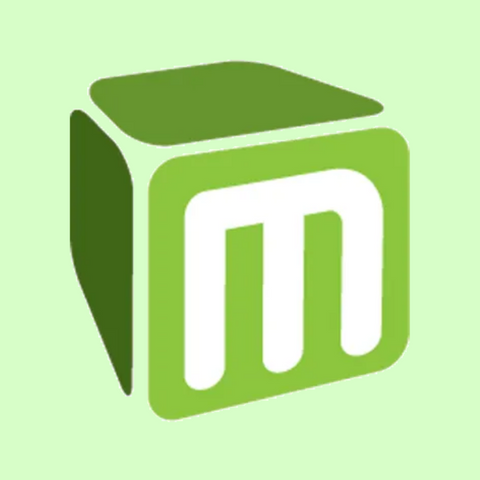
16. Megaventory
Best for SMEs
- Barcode ScanningNo
- Inventory Turnover ReportingNo
- IntegrationQuickBooks Online, Magento, Shopify
About Megaventory
Megaventory is an enterprise-level software for inventory and order management. Megaventory was founded in 2010 and is headquartered in Allen, Texas. They are primarily for the manufacturing and order fulfillment needs of small and medium enterprises.
Megaventory Features
Inventory management across multiple locations.
Order fulfillment and manufacturing tracking.
Advanced data management with multiple currencies, exchange rates, and pricing rules.
Advanced software customization, including languages other than English.
Popular e-commerce integrations like Woo, Shopify, and Magento.
Megaventory Pros/Cons
Offers 10% discount on annual pricing.
15-day free trial for exploring the software with no credit card required.
Great for global small and mid-size businesses in need of order fulfillment and manufacturing management.
Discounts are available for non-profits.
Mandatory onboarding package for $1,500.
Only 5 users are included in the price of Pro.

17. Unleashed
Best for Stock Control
- Barcode ScanningYes
- Inventory Turnover ReportingYes
- IntegrationE-commerce, Accounting, Shipping, Fulfillment
About Unleashed
Unleashed is a dynamic inventory system to handle your priority business data. For more than 10 years Unleashed has worked hard on the goal of helping businesses with inventory, sales, and production from their offices in the UK, New Zealand, and Australia.
Unleashed is a complete solution suited for very complex workflows and detailed inventory tracking. Use cases include retail, food and beverage, manufacturing, wholesale, and e-commerce.
Unleashed Features
Functionality to manage customers, suppliers, transactions, warehouses, currencies, and products.
Sandboxing for new workflows on important data.
Inventory management with serial and batch tracking.
E-commerce hub and B2B e-commerce.
Business intelligence insights.
Add-ons for CRM, B2B portal, and business intelligence.
Unleashed Pros/Cons
Great solution for advanced inventory and data management.
Built-in user seats in pricing.
Great for medium and large enterprises.
Pricing is on the high side and not suited for small teams.
Highest plan goes up to 20 users.
Best Inventory Management Software Comparison
The table below provides a comparison of pricing, ratings, and features for the best inventory management software.
Inventory Management Software | Rating Geekflare’s editorial team determines ratings based on factors such as key features, ease of use, pricing, and customer support to help you choose the right business software. | Price (monthly) | Warehouse Management | Order Fulfilment | Explore |
|---|---|---|---|---|---|
 Zoho Inventory | $29 | ✅ | ✅ | ||
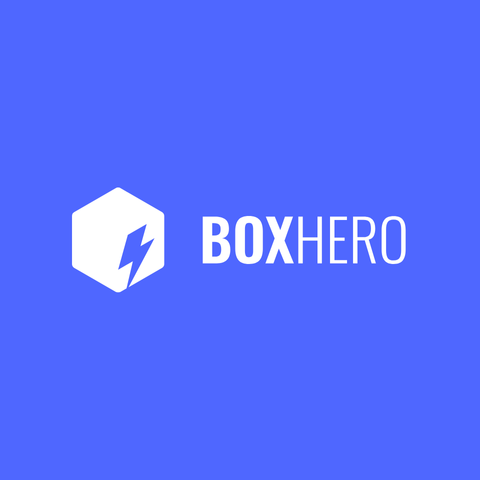 BoxHero | $18 | ✅ | ✅ | ||
 Bitrix24 | $49 | ✅ | ✅ | ||
 QuickBooks | $5.7 | ✅ | ✅ | ||
 NetSuite | On request | ✅ | ✅ | ||
 monday.com | $9 | ❌ | ✅ | ||
 Sortly | $24 | ❌ | ❌ | ||
 inFlow | $149 | ✅ | ✅ | ||
 Fishbowl Inventory | On request | ✅ | ✅ | ||
 Finale Inventory | $99 | ✅ | ✅ | ||
 Veeqo | $250 | ✅ | ✅ | ||
 Ordoro | $349 | ❌ | ✅ | ||
 Brightpearl | On request | ✅ | ✅ | ||
 Cin7 Core | $349 | ✅ | ✅ | ||
 Katana | $179 | ✅ | ✅ | ||
 Megaventory | $135 | ✅ | ✅ | ||
 Unleashed | $380 | ✅ | ✅ |
What Is Inventory Management Software?
Inventory management software is used to catalog and track business products and stock. You can also refer to them as stock management systems. The software to manage inventory can include monitoring sales as well as handling order and distribution data. Manufacturing and warehousing are industries that run on inventory software.
Core features of an inventory solution can be invoicing, managing receipts and purchases, and cataloging detailed information about each item. Advanced features, but not always available with all tools, include order fulfillment and shipping management.
How Much Does Inventory Management Software Cost?
Inventory management software is expensive. Most plans are around $100 or less per month, and very costly plans are several hundred or around a thousand per month, which either way means thousands per year for your primary software for inventory control. The bright side is cheaper options can be less than $100 per month, with many gems offering their services for free.
Why Do Companies Need Inventory Management Software?
Companies need inventory management software for managing physical inventory and stock levels. Stock management software often has notifications and analytics to track changes and make predictions based on sales and orders.
Another big reason is to avoid mistakes. Keeping your records tight and reliably accurate is directly needed for proper accounting. New teams just starting out may go with manual records, but as a company grows, the need to streamline those important business processes will grow.
Inventory management systems offer the benefits below.
- Efficient Inventory Control
- Cost Reduction
- Improved Accuracy
- Demand Forecasting
- Enhanced Customer Service
Depending on the software, you can also benefit from combined shipping and order fulfillment tools such as those offered by Ordoro, Veeqo, and Brightpearl.
Is Inventory Management Software the Same as POS Software?
No, inventory management software is not the same as POS software. POS or point of sale software is for managing the transactions of retail businesses and their customers. It allows employees to process customer purchases while simultaneously updating the product inventory and sales history.
Inventory organization systems won’t automatically come with POS software built-in. The goal of inventory systems is to ensure you know exactly how much you have of stock on hand and to improve workflows directly related to inventory, sales, or delivery.
Can Inventory Management Software Be Used To Track Orders?
Yes, inventory management software can track orders, but not every software offers order tracking or fulfillment. If you need something for handling inventory, orders, and even shipping, then you should consider software like Veeqo and Ordororo as well as solutions with relevant integrations.
How Do You Choose An Inventory Management System?
The first thing you should do is separate the core features of inventory management and adjacent ones. Order fulfillment and shipping will likely mean your potential software will be a lot more expensive. If you want to find the best inventory management software for your team, you need to figure out your deciding factors.
While choosing an inventory management system that best suits your business needs, explore the following steps and considerations:
- Assess your business needs.
Identify your specific inventory management requirements, including the types of products you handle, order volume, and any industry-specific needs. - Set a budget.
Determine how much you can allocate for an inventory management system, considering both upfront costs and ongoing subscription or maintenance fees. - Understand your budget and the expense commitment.
You should be realistic and look at free and cheap solutions first. Even if you can afford to spend more, will it be worth it? - Talk to your team.
You should brainstorm with your team for input. The last thing you want is to spend several thousand on software that your team struggles to learn, barely affects your workloads, and limits you to only 1-3 users. - Plan your time wisely.
If you don’t have time in your workload to test free trials, contact sales teams, read reviews, and do in-depth research, then you need to make time or pass the project. - Access tutorials or demos.
The user interface can make or break software. It can be affordable with great features, but if your team is frustrated with the navigation or random glitches on a daily basis then mistakes will add up. - Prepare for the learning curve.
All software has some form of a learning curve. You need to give your team a break and change their workloads to match the time they need to learn the software. It can take a couple of weeks to months to really master a new application. Make sure to ask them how long they think they will need based on previews of the software.
Buying software can take months, but by planning ahead and building a strategy, you can mitigate future obstacles.
Why Is Inventory Management Software Popular?
Retail e-commerce and manufacturing are the heart of most modern business operations from startup makeup companies to furniture wholesalers. Inventory management solutions are extremely valuable and help teams of all sizes. As they grow in popularity, more functionality is added to improve business processes like project management, cataloging, and communication. Some of the best inventory management software streamline the supply chain cycle and offer tools for data-driven decision-making to grow your business.
Is Inventory Management Software Worth It?
Yes, inventory management software is worth it. Inventory control systems are developed to minimize errors, automate tedious tasks, upgrade operations, and speed up workloads. In terms of costs, it can be very daunting. If you want to make sure the software is really worth it, make sure to read reviews, watch online tutorials, and take advantage of free trials.
What are the Other Enterprise Software?
Relevant business software for enterprises is enterprise resource planning (ERP) software, customer relationship management (CRM) software, and robust project management tools.
For many organizations, inventory management is the soul of the entire operation. Stock control software that can improve how your team works, automate tasks, ensure project steps are followed through, and create engaging customer experiences all affect inventory and orders.
Platforms like Zoho One, which combines CRM, ERP, inventory management, and more into a unified solution, can help businesses streamline operations and enhance productivity. As you look for new software, always think about how it works with your tech stack and whether you want more services.

